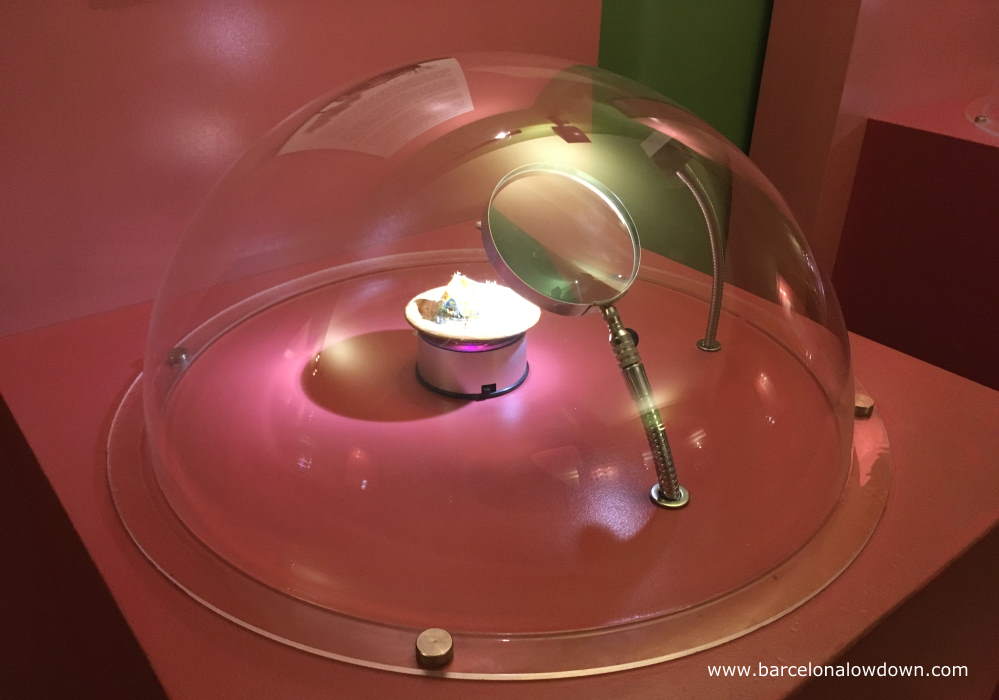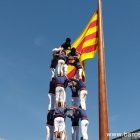With a population of approximately 2400 people, Besalú makes an interesting and relaxing day trip from Barcelona. As you wander the narrow streets, it’s hard to believe that this now tranquil small town was once an important local capital during the Middle Ages.

What to See in Besalú
Besalu’s star attraction is, without doubt, the Romanesque bridge over the river Fluviá. It’s curious to think that as you approach the town across the old bridge, you’re following in the footsteps of a thousand years worth of travellers.
The picturesque town centre is a compact huddle of restored medieval stone houses, small squares and narrow cobbled/flagstone streets.
The most notable buildings are the Mikveh (Jewish baths and synagogue), the Church of Sant Vicenç and the Sant Pau Monastery. The Tourist Office can organise guided walking tours (essential if you want to visit the Miqve).

While you’re here, it’s also worth visiting the unusual Micromundi miniatures museum.
It only takes a few hours to “see” Besalú, and it’s easy to combine with a visit to nearby Girona since there are frequent local buses between the two towns. You can then either spend the night in Girona or get one of the regular trains from there to Barcelona.
In September, the town stages its annual medieval fayre.

Where to stay in Besalú
Most people visit Besalú as a day trip but the village also makes an attractive base for visiting the La Garrotxa region.
We stayed at Els Jardins de la Martana which is an elegant hotel in a historic building, right next to the Romanesque bridge. Several of the rooms have small balconies with views of the bridge and the village. When the weather is good, breakfast is served on the roof terrace which overlooks a small garden with views of the village. Upstairs there’s a library which can be used by residents.
Check prices and availability on Booking.com

How to get to Besalú from Barcelona and where to Park
By bus
There are four buses daily between Barcelona and Besalú. The route is operated by TEISA and departs from Av. Gran Vía, 658. Please note that this is NOT a bus station.
The journey takes around 1 hour 45 minutes, and the fare is approximately €15. Bus timetable and prices here.
Buses from Besalú to Girona here
Trains from Girona to Barcelona here
By car
If you have a car, it takes about 1 hour 45 minutes to drive to Besalú via the AP7/E15 and the C-66 via Girona and Banyoles.
There’s a large free car park at the entrance to the village near the Romanesque bridge and the Tourist Information office. If you’re using Google Maps, search for Parking Gratuït Besalú.
Tours
Get Your Guide offers several tours which visit Besalú including this Small-Group Medieval Villages Day Trip from Barcelona

Places to visit near Besalú
Banyoles
The town of Banyoles is best known for its lake, Estany de Banyoles, which is the largest in Catalonia and was used for rowing events during the Barcelona Olympics. The Tourist Information office, which is located next to the lake, has free maps with information about walking routes in the area. The medieval town centre is centred around an attractive plaza surrounded by arcaded stone buildings.

La Fageda d’en Jordà
Twenty-five kilometres from Besalú, the Fageda d’en Jordà is a beech forest located in the midst of the Garrotxa Volcanic Zone. The forest is crossed by several walking trails including a circular route that takes you to two of the largest volcanoes in the area.
Figueres
The town of Figueres is best known for being the birthplace of surrealist Salvador Dalí. In addition to the Dalí Theatr-Museum, one of Barcelona’s most popular day trips, the town also boasts one of the largest bastion fortresses in Europe built during the eighteenth century.
Girona
The medieval city of Girona boasts one of the largest and best-preserved medieval Jewish Quarters in Europe. Other attractions include Girona Cathedral, the medieval Arab Baths, the pastel-coloured houses which line the banks of the River Onyar, the Eiffel Bridge, the Sant Pere de Galligans Monastery and Casa Masó.
Map
Girona, Spain




